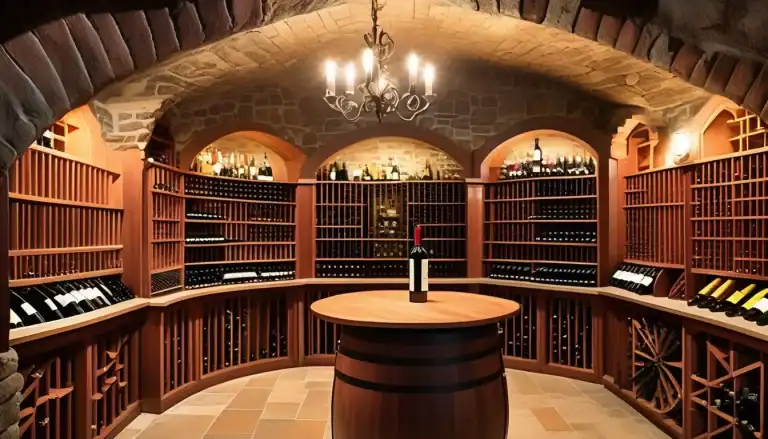As a wine enthusiast and collector passionate about port wine, I’m excited to take you on a journey to discover the secrets of this beloved fortified wine’s rich history and exquisite flavors. The Douro River Valley in northern Portugal is the renowned region where port wine is made, featuring subregions like Baixo Corgo, Cima Corgo, and Douro Superior, each with distinct characteristics.
Having explored the sun-drenched vineyards of the Douro Valley and tasted the finest ports, I can attest to the unique charm and sheer complexity of this cherished beverage.
Welcome to Didi Somm, and Cheers!
Important Notice: The information in this article is for general and public information purposes only. It solely reflects Didi Somm’s or his Staff’s opinion, and no responsibility can be assumed for errors or omissions in the service’s contents. For details, please check the Disclaimer at the bottom of the homepage.

Main Takeaways:
Port wine is a fortified wine produced exclusively in the Douro Valley of northern Portugal.
Port has a rich history and tradition, dating back to the 17th century.
There are various styles of port wine, like ruby, tawny, white, and vintage port, each with its characteristics.
The production process involves stopping fermentation by adding grape spirit, producing a sweet, high-alcohol wine.
Proper storage and serving techniques are crucial to enjoying the rich flavors of port wine fully.
The Origins of Port Wine
The Douro Valley, a picturesque region in northern Portugal, is the exclusive production area for this legendary fortified wine. The Douro’s unique microclimate and steep, terraced vineyards create the perfect conditions for growing the grapes used in port production.
While Port wine is exclusively produced in Portugal, countries like Argentina, Australia, Canada, and France also produce “port-style” fortified wines. According to EU guidelines, only wines from Portugal are allowed to be labeled ‘port.’
Port wine’s story began in the 17th century when British merchants added brandy to Portuguese wines to prevent spoilage during long sea voyages. This practice evolved into the sweet, fortified wine we know today as “port.”
The name “port” itself comes from the City of Porto, where the wine was traditionally aged and shipped from.

The Douro Valley: A UNESCO World Heritage Site
The Duoro Valley region in northern Portugal was designated a UNESCO World Heritage Site in 2001. The steep, terraced vineyards that line the Douro River are a testament to centuries of winemaking tradition and human ingenuity.
The unique schist and granite soils of the Douro Valley contribute to the distinctive flavors found in port wine. These poor, well-draining soils force the vines to struggle, producing grapes with concentrated flavors and aromas.
The Art of Port Wine Production
The journey from grape to glass involves several crucial steps that set port apart from other wines – it’s truly an art form. Certain types of port, such as crusted and tawny, are created by blending several vintages, allowing for the optimization of varying characteristics and the ability to create a specific house style.
Port wines are often aged in wooden barrels, which allow for evaporation, oxidation, and gradual color changes. Individual port houses are crucial in making decisions about the vintage declaration and producing single-Quinta (single estate) vintage ports.
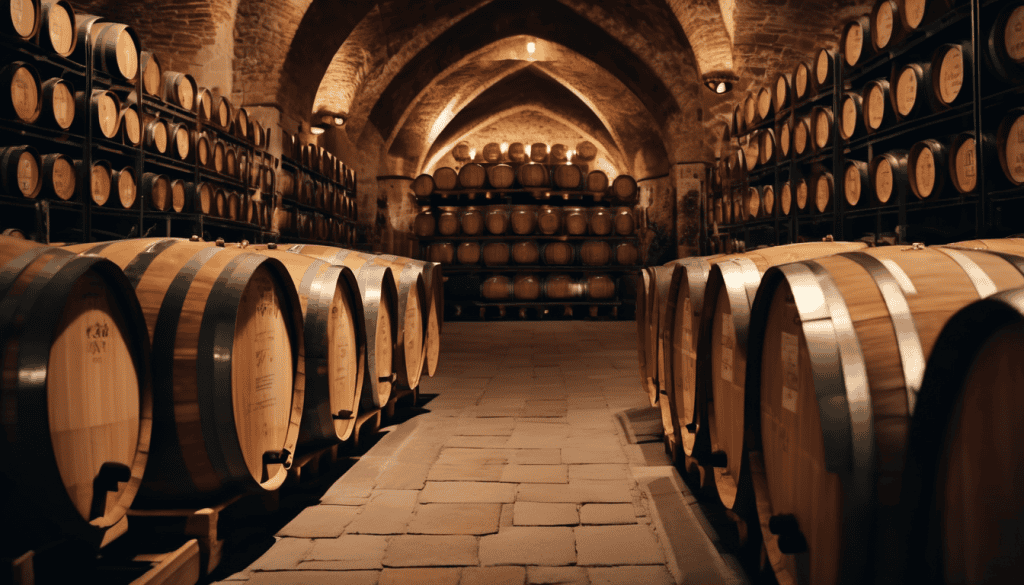
Grape Varieties: The Building Blocks of Port
While over 100 grape varieties are permitted in port production, only a handful are widely used. The most prized variety is Touriga Nacional, known for its intense flavors and aromas. Other important varieties include Touriga Franca, Tinta Roriz (Tempranillo), Tinta Barroca, Tinta Cão, and Tinta Amarela.
Each grape variety contributes unique characteristics to the blend. Touriga Nacional contributes structure and intense black fruit flavors, while Touriga Franca adds floral notes and softness to the wine.

The Unique Fortification Process
What truly sets port apart from other wines is the fortification process. After the grapes are harvested and crushed, fermentation begins as usual. However, when about half of the grape sugar has been converted to alcohol, a neutral grape spirit (aguardente) is added to the fermenting must.
This addition of spirit serves two purposes: it stops fermentation, leaving residual sugar in the wine, and it increases the alcohol content to around 20% ABV. The result is a sweet, high-alcohol wine with intense flavors and aromas.
Aging: That’s where the Magic Happens
The aging process is where port wine truly develops its character. Depending on the style of port being produced, the wine may be aged in large oak vats, small oak barrels, or even bottles. Port wines are often matured in wooden barrels, which allows a small amount of exposure to oxygen, resulting in oxidative aging.
During my visits to port lodges in Vila Nova de Gaia, I’ve seen rows upon rows of barrels filled with aging port. The cool, humid conditions in these cellars are ideal for the slow maturation of the wine.
Styles of Port Wine: A Rainbow of Flavors
One of the things I love most about port is its diversity. There’s a style to suit every palate and occasion. Due to its sweetness and richness, port wine is often enjoyed as a dessert wine.
The port wine taste is characterized by its sweetness and a range of flavors, including raspberry, blackberry, caramel, cinnamon, chocolate sauce, and nutty flavors in older, fine Tawny Ports.
Let’s explore the main types of port you’re likely to encounter:
Ruby Port: Young and Vibrant
Ruby port is the youngest and freshest style of port. It’s aged for a short period in large oak vats to preserve its bright red color and fruity flavors. It is the most widely produced and least expensive type of port wine.
Reserve Ruby Port is a higher-quality subcategory within the Ruby Port umbrella, made from better fruit and with more stringent standards.
This port type is perfect for those new to port wines, as it’s approachable and easy to drink.
Tawny Port: Mellow and Nutty
Tawny Port holds a special place in my heart. Aged in small oak barrels, it gradually loses its red color and develops complex nuts, dried fruits, and caramel flavors.
The exposure to oxygen through the barrel’s pores leads to a gradual oxidation, resulting in its characteristic amber color.
Tawny ports are often labeled with an indication of age (10, 20, 30, or 40 years). These ages represent the average age of the wines in the blend. A well-aged Tawny Port is a thing of beauty, with layers of flavor that unfold on the palate.
Vintage Port: The King of Ports
Vintage port is the most prestigious and long-lived style of port. It’s made only in exceptional years when a vintage is “declared” by the port houses.
Vintage ports are produced by individual port houses, who decide on “vintage declaration.” These wines are aged for just two years in barrels before being bottled, where they continue to age for decades.
Single Quinta vintage ports originate from a single estate and are used when the house’s regular vintage port is “not declared.”
I’ll never forget the first time I tasted a 50-year-old vintage port. The complexity and depth of flavors were truly mind-blowing. Notes of dried fruits, spices, and even a hint of menthol danced on my palate.
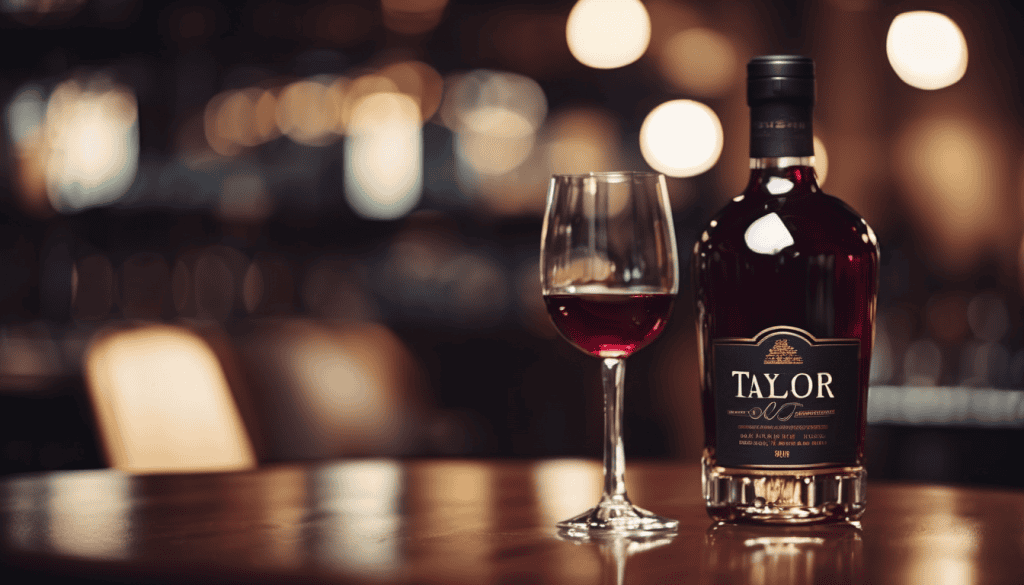
Late Bottled Vintage (LBV) Port: The Best of Both Worlds
LBV port is a style that bridges the gap between ruby and vintage port. It’s made from grapes of a single year but aged for 4-6 years in barrels before bottling. This extended aging gives it more complexity than a ruby port, but it’s ready to drink sooner than a vintage port.
I often recommend LBV ports to those looking to explore more serious styles of port without the long wait (or high price tag) associated with vintage ports.
White Port: The Refreshing Alternative
While red ports dominate the market, white ports shouldn’t be overlooked. Made from white grape varieties, it can range from very sweet to very dry.
I recommend enjoying a chilled white port as an aperitif, especially on a hot summer day.

The Rich History of Port Wine
Walking through the narrow streets of Porto, I’m always struck by the sense of history that permeates the air. Port wine has played a crucial role in shaping this city and the surrounding region for centuries.
While port-style fortified wines are produced in various countries, including Canada, France, India, Italy, South Africa, and Spain, the original port wine is exclusively produced in the Douro Valley region.
The Port and Douro Wines Institute, an official body associated with the Ministry of Agriculture of Portugal, promotes the industry and knowledge of making port wine.
The Methuen Treaty of 1703
The story of port’s rise to international fame begins with the Methuen Treaty of 1703. This agreement between England and Portugal gave Portuguese wines preferential treatment in the English market. As a result, the demand for port wine skyrocketed, leading to a boom in production and trade.
The Marquis of Pombal and the Demarcation of the Douro
In 1756, the Marquis of Pombal, a Portuguese statesman, took a significant step in regulating port wine production. He established the Douro Wine Company and demarcated the Douro region, creating the world’s first officially demarcated wine region.
This move was aimed at ensuring the quality and authenticity of port wine. The demarcation still stands today, with all authentic port wine required to come from the Douro region.
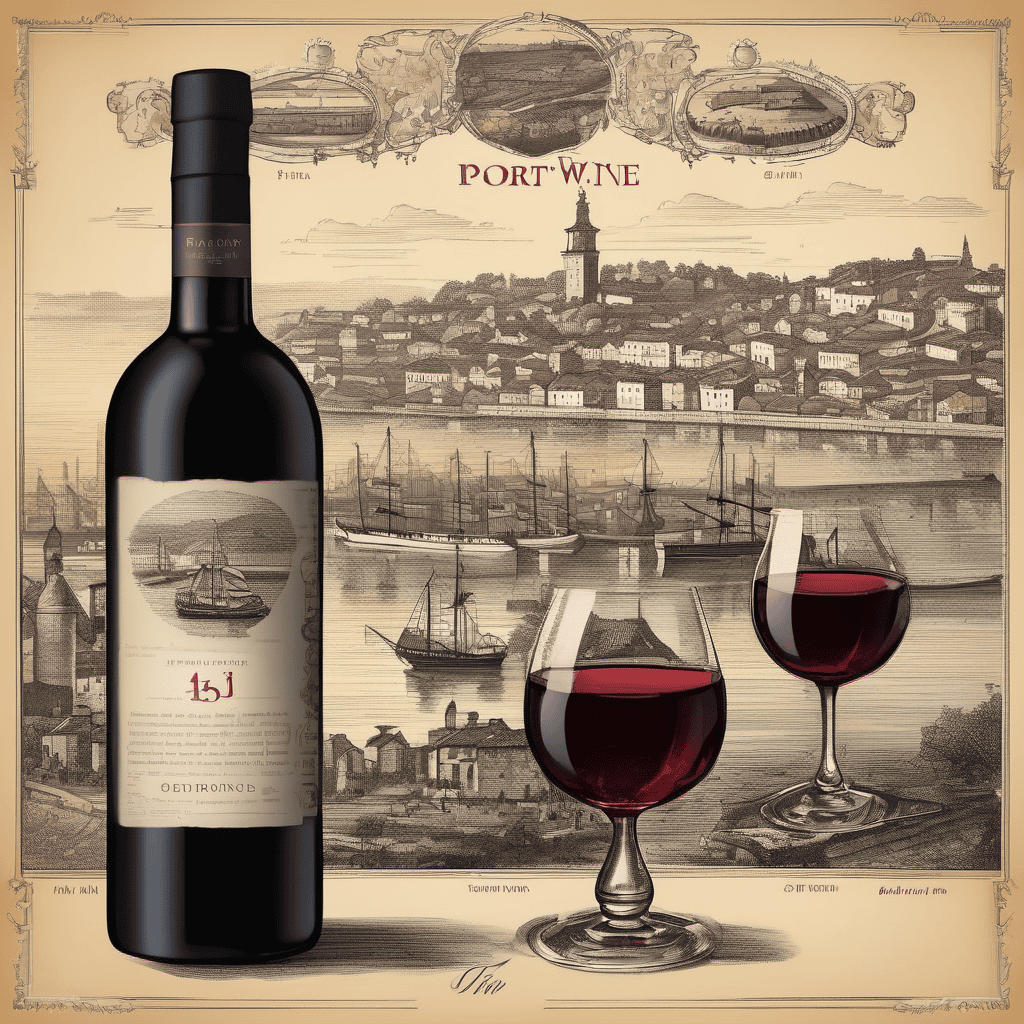
The British Influence on Port Wine
The British have played a significant role in the development of port wine. Many of the most famous port wine houses were founded by British families who settled in Porto. Names like Taylor’s, Graham’s, and Croft’s are still prominent names in the port wine industry today.
During my visits to these historic port lodges, I’m always fascinated by the blend of Portuguese and British influences evident in their architecture and traditions.

Serving and Storing Port Wine
Proper storage and serving port wine are crucial to fully appreciating its flavors and aromas. Over the years, I’ve learned some tips to enhance your port-drinking experience.
The Ideal Storage Conditions
Port wine should be stored in a cool, dark place with a constant temperature. Fluctuations in temperature can cause the wine to expand and contract, potentially leading to oxidation.
I recommend professional storage facilities for vintage ports you plan to age for many years. However, a cool closet or basement will suffice for most ports you’ll consume within a few years.
For further information about “how to store port wine,” I refer to my recent blog article Preserve the Richness: How to Store Port Wine for Longevity & Flavor.
Serving Temperatures Matter
The temperature at which you serve port can significantly impact its taste. Generally, I recommend serving ruby and vintage ports slightly below room temperature, around 60-65°F (16-18°C). Tawny ports can be served slightly cooler, around 55-60°F (13-16°C).
White port is best served chilled, like a white wine. I usually aim for about 45-50°F (7-10°C).
The Art of Decanting Port Wine
Vintage ports, particularly older ones, often throw sediment and benefit from decanting. This process not only separates the wine from the sediment but also allows the wine to breathe and open up.
I always find the ritual of decanting a vintage port to be a special experience. Using a candle or flashlight to illuminate the bottle’s shoulder, I slowly pour the wine into a decanter, stopping when I see the first signs of sediment reaching the neck.
Food Pairing: Enhancing the Port Wine Experience
Pairing food with port can elevate both the wine and the dish. Port wine is a sweet wine with raspberry, blackberry, caramel, cinnamon, and chocolate sauce flavors. Over the years, I’ve discovered some fantastic combinations that I’m excited to share.
Classic Cheese Pairings
One of my favorite ways to enjoy port is with a selection of cheeses. The sweetness and high alcohol content of port make it an excellent match for strong, salty cheeses served with walnuts.
For ruby ports specifically, I love pairing them with aged cheddar or Stilton. The wine’s fruitiness complements the sharpness of the cheese beautifully. With their nutty flavors, Tawny ports pair wonderfully with harder cheeses like aged Gouda or Parmesan.
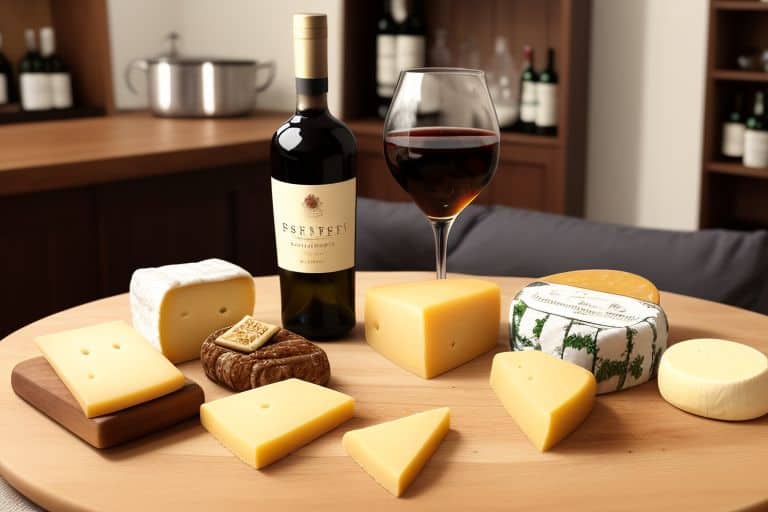
Dessert Pairings: A Match Made in Heaven
Port’s sweetness makes it a natural companion to desserts. Ruby and LBV ports pair beautifully with chocolate desserts. The wine’s fruitiness complements the richness of the chocolate.
With their caramel and nut flavors, Tawny ports are fantastic with crème brûlée or nut-based desserts like pecan pie. I’ve even enjoyed a 20-year tawny port with foie gras for a truly exceptional experience.

Savory Pairings: Thinking Outside the Box
While port is often associated with sweet dishes, it can also pair well with savory foods. I’ve had great success pairing vintage port with game meats like venison or wild boar. The wine’s intensity stands up well to these intense flavors of the game meat.
White port, especially drier styles, can be an excellent aperitif paired with olives, almonds, or light seafood dishes.
FAQ – Your Port Wine Questions Answered
1. What is the difference between port and other wines?
Port is a fortified wine, meaning that grape spirit is added during fermentation. This results in a sweeter, higher-alcohol wine than traditional table wines.
2. How long does port wine last after opening?
If stored correctly in a cool place with a stopper, Ruby and LBV ports can last 4-6 weeks. Due to their oxidative aging process, tawny ports can last up to 2-3 months.
3. What is the best way to store an opened bottle of port?
Store it upright in a cool, dark place with a stopper or the original cork. For more extended storage, consider using a vacuum pump to remove air from the bottle.
4. Can port wine be aged?
Vintage ports are designed for long-term aging and can improve for decades. Most other styles are ready to drink when released but can be aged for a short period.
5. What is the ideal serving temperature for port?
Ruby and vintage ports are best served at 60-65°F (16-18°C), tawny ports at 55-60°F (13-16°C), and white ports chilled at 45-50°F (7-10°C).
6. What foods pair well with port wine?
Port pairs well with cheeses, chocolate desserts, nuts, and dried fruits. Vintage ports can also complement game meats and rich sauces.
7. Is port wine always sweet?
Most ports are sweet, but there are dry styles, particularly in white port. The sweetness levels can vary significantly between different styles and producers.
8. What does “vintage” mean in port wine?
A vintage port is made from grapes of a single, exceptional year. These are only produced in years declared as vintages by port houses.
9. How is Tawny port different from Ruby port?
Tawny port is aged in small oak barrels, exposing it to oxidation, resulting in a nutty, caramel-like flavor and amber color. Ruby port is aged in large vats to preserve its red color and fruity flavors.
10. Can port wine be used in cooking?
Yes, port can be used in cooking, particularly in sauces for meats, in desserts, and as a flavoring for poached fruits.
11. What does LBV stand for in port wine?
LBV stands for Late Bottled Vintage. It’s a port from a single year aged 4-6 years before bottling.
12. Is port wine only made in Portugal?
Authentic port wine can only be made in Portugal’s demarcated Douro region. However, port-style fortified wines are produced in other countries.
13. What grape varieties are used to produce port?
Port is produced using specific grape varieties, including Touriga Nacional, Tinta Roriz, and Tinta Barroca for red ports and Malvasia Fina and Gouveio for white ports. These grapes are grown under strict regulations in Portugal.
14. What is the alcohol content of port wine?
Most ports have an alcohol content of around 20% ABV (alcohol by volume) due to the addition of grape spirit during fermentation.
15. Can port wine be served as an aperitif?
While traditionally served after dinner, some styles, like white port and lighter ruby ports, can make excellent aperitifs, especially when served chilled.
16. How long can an unopened bottle of port wine be stored?
Non-vintage ports can be stored for several years. Vintage ports can be cellared for decades, with some improving for 50 years or more.
Conclusion
As we end our port wine journey, I hope you’ve gained a deeper appreciation for this remarkable fortified wine. From its long and rich history rooted in the Douro Valley to its diverse styles catering to every palate, port wine offers a world of flavors to explore.
I encourage you to taste the different styles of port, experiment with food pairings, and perhaps even plan a visit to the beautiful Douro Valley. The world of port wine is vast and varied, offering endless opportunities for discovery and enjoyment.
As we raise our glasses, let’s toast to the enduring legacy of port wine – a true testament to the artistry of winemaking and the magic that happens when nature, tradition, and human skill come together in perfect harmony. Saúde – Cheers!
For your reference, the latest articles by Didi Somm include:
- Best Red Wine For Cooking – All You Need To Know
- How Much Does a Bottle of Wine Weigh? – Find Out Here
- What Does Wine Taste Like? – Find Out Here
- Expert Talk: Wine Bottle Sizes – All You Should Know
- What is a Sweet Wine? – 7 Expert Insights
- Wine Fridge vs Regular Fridge: Best Advice for You
Important Notice: The information in this article is for general and public information purposes only. It solely reflects Didi Somm’s or his Staff’s opinion, and no responsibility can be assumed for errors or omissions in the Service’s contents – for details, please check the Disclaimer at the bottom of the homepage.




